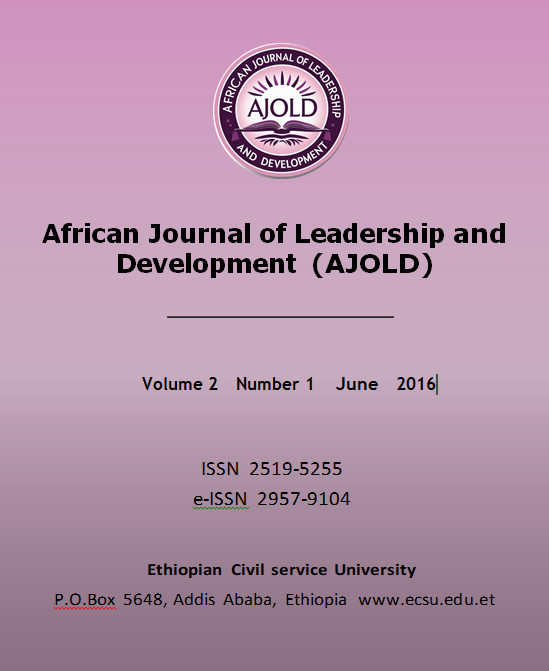The Socio-Economic Impact of Commune Programs in Ethiopia: The Case of Gambella Regional State
DOI:
https://doi.org/10.63990/2016ajoldvol1iss1pp40-55Keywords:
Villagization, Impact Evaluation, PSMAbstract
The government of Ethiopia has been executing a number of development programs under the umbrella of a medium term strategy called Growth and Transformation Plan geared towards transforming the economy towards an industry led one. Development of pastoralist and semi-pastoral areas is one of the key elements of the agriculture sector under this pillar. It has been emphasized that unlocking the potential of these fertile but remote and underdeveloped areas in the country could add up to enhanced production and productivity in the agriculture sector. However, with a scattered settlement and poor living conditions transforming the pastoralist and semi-pastoralists would proof difficult. Villagization program is assumed to remedy this problem. The study was aimed to understand the socio-economic impact of such a program through impact evaluation methodology. A quasi-experimental design approach (specifically the propensity score matching method) has been used to analyze the impact of the program on the socio-economic conditions of the settlers. A multi-stage cluster sampling method was used to obtain a representative sample of 120 program participants and 120 non-participants. Results of the study reveal that villagization has a positive impact on the income of participants, access to services and enhancing consumption. This was significant for income and access to service outcome variables. As revealed by average treatment effect of treated (ATT) estimation, the mean difference of annual income of participants and non-participants vary by about 12,000 birr, which is indeed a significant figure, and justifies the program intervention. Participants have also enjoyed a higher probability (at least 32% higher chance) of accessing infrastructure and services, compared to non-participants.
Downloads
Published
How to Cite
Issue
Section
License
This work is licensed under a Creative Commons Attribution-NonCommercial 4.0 International License






